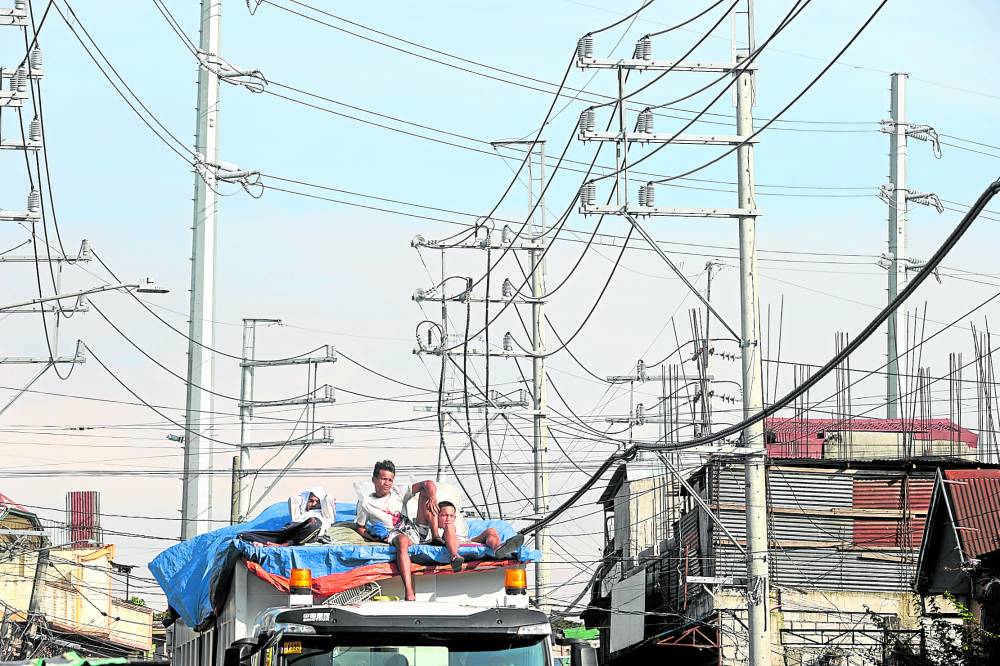Lawmakers want power status review before La Niña hits PH

STABLE SUPPLY. Regular maintenance of power lines assures households and businesses on Litex Road in Quezon City of stable electricity supply. — NIÑO JESUS ORBETA
MANILA, Philippines — Lawmakers in the House of Representatives have called on the government to review the country’s power situation before La Niña hits the country.
In separate statements, the following lawmakers questioned if power companies and distribution utilities are prepared to provide electricity even with the threat of La Niña looming:
- Zambales 1st District Rep. Jefferson Khonghun
- Lanao del Sur 1st District Rep. Zia Alonto Adiong
- 1-Rider party-list Rep. Ramon Rodrigo Gutierrez
- La Union 1st District Rep. Paolo Ortega V
- Isabela 6th District Rep. Faustino Dy V
- Nueva Ecija 1st District Rep. Mikaela Angela Suansing
- Ako Bicol party-list Rep. Raul Angelo Bongalon
- Manila 3rd District Rep. Joel Chua
“La Niña is not just a weather event; it is a potential disruptor of daily life and economic activities. We cannot afford to wait until it strikes to realize that we are unprepared. The power companies must assure us that they have contingency plans in place,” Khonghun said.
“Our constituents rely heavily on the consistent power supply for their day-to-day needs and safety. Any lapse could have dire consequences. We need transparency and proactive measures from our power providers to mitigate any risks associated with La Niña,” Alonto added.
According to Gutierrez, the country’s power infrastructure must be strong to withstand La Niña, a weather phenomenon where average sea surface temperatures (SSTs) are colder than normal.
Article continues after this advertisementThe Philippine Atmospheric, Geophysical and Astronomical Services Administration (Pagasa) said La Niña could cause above-normal rainfall conditions, including floods and landslides over vulnerable areas.
Article continues after this advertisement“The infrastructure must be robust enough to withstand the challenges posed by La Niña. This includes not just the capacity to generate electricity, but also the resilience of our transmission and distribution networks,” Gutierrez said.
“We need a thorough assessment of our current capabilities and immediate action to address any identified gaps,” he added.
Early June, Pagasa declared the end of El Niño when SSTs were warmer than average, leading to dry spells and droughts.
READ: Pagasa declares end of El Niño
However, the La Niña watch remains in place as they see a 69 percent chance of it between July, August, and September.
READ: Pagasa raises La Niña Watch as forecasts show early onset
Ortega said the power companies and the government must work to ensure the availability of electricity, which is crucial during times of calamity.
“The collaboration should extend to creating and implementing long-term strategies that enhance our energy security and sustainability,” he added.
However, Dy and Suansing feel that there is a lack of preparation among power companies.
“What specific measures have been put in place to handle the expected increase in demand and potential disruptions caused by La Niña?” Dy asked.
“Our elderly, children, and those with medical needs are especially at risk during power outages. We need assurance that power companies are prioritizing the stability of supply to safeguard these vulnerable groups,” Suansing said. “Preventive measures should include specific support plans for these vulnerable communities to ensure their safety and well-being during potential blackouts.”
During the dry season, the Philippines saw red and yellow alerts to its grid due to a thinning supply and a higher demand for electricity.
On May 14, the Department of Energy was quizzed about the lack of plans to quickly address recent power woes in the country.
READ: DOE questioned over lack of plans to address power woes
Bongalon said that in the future, the focus may be placed on sustainable solutions, like renewable and clean energy sources, to address supply gaps.
“In addressing the potential impacts of La Niña, we must also consider long-term, sustainable energy solutions. Investing in renewable energy and improving our infrastructure resilience will pay off in the face of such challenges,” he said.
“Renewable energy sources like solar and wind can provide more stable and reliable power, reducing our dependence on vulnerable traditional power sources,” he added.